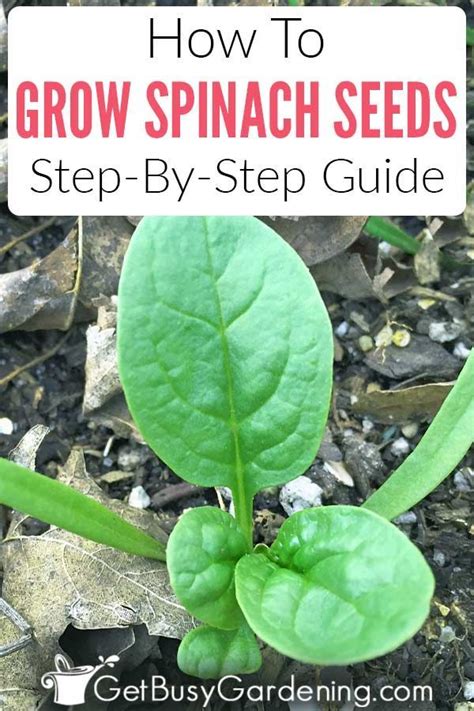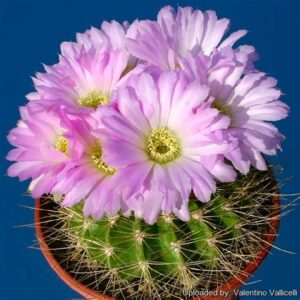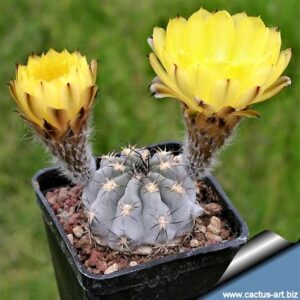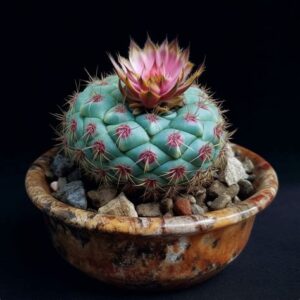The passion for cacti cultivation can often be traced back to their magnificent blooms and extraordinary adaptations. Acanthocalycium violaceum, a captivating species hailing from the arid landscapes of South America, epitomizes this allure. Known for its striking purple flowers and fleshy globular form, the fascination with this cactus species extends far beyond its aesthetic appeal, delving into the intricate relationship between nature and survival. Cultivating Acanthocalycium violaceum from seeds presents an exciting opportunity for enthusiasts to delve into the world of propagation, fostering a connection with the natural environment that is profound and fulfilling.
In this guide, we will traverse the path of cultivating Acanthocalycium violaceum from seeds, elucidating each step while unraveling the nuances that underpin successful propagation.
Understanding the Natural Habitat
Before embarking on your seed propagation journey, it is imperative to understand the ecological niche that Acanthocalycium violaceum occupies. These cacti thrive in the harsh, arid conditions of Argentina, where they have adapted to endure extreme temperatures and minimal water availability. The geological composition of their native habitat, primarily sandy and well-draining soils, plays a crucial role in their growth and development.
In their natural environment, Acanthocalycium violaceum often find shelter among rocky outcrops, providing them protection from intense sunlight and allowing for humidity retention during cooler nights. Familiarizing oneself with these environmental factors can greatly enhance the success rate of germination and subsequent growth in cultivation.
Gathering the Essentials for Propagation
To initiate the journey of growing Acanthocalycium violaceum from seeds, prepare a toolbox of essential materials. The right equipment will facilitate an environment that mimics their native conditions, crucial for germination and healthy growth.
1. Quality Seeds
Purchase high-quality, freshly harvested seeds from a reputable supplier to ensure optimal viability. Acanthocalycium violaceum seeds are notably small, necessitating careful handling to avoid damage or loss.
2. Seed-Starting Mix
Opt for a specialized cactus seed-starting mix or a well-draining soil medium such as a blend of cactus soil, perlite, and vermiculite. The soil’s texture plays a vital role in water retention and aeration, both of which are pivotal for seed germination.
3. Containers
Utilize shallow seed trays or small pots with drainage holes to prevent waterlogging as the seeds start to germinate. Clear plastic domes or humidity lids can be beneficial for maintaining moisture levels during the early stages.
4. Light and Temperature
Aconthocalycium violaceum seeds require bright light for successful germination. A grow light or a south-facing window with ample sunlight is ideal. Temperature should be kept between 70°F to 85°F (20°C to 30°C) to create an optimal warm environment akin to their natural habitat.
5. Watering Tools
A gentle spray bottle or a watering can with a fine spout will help deliver moisture without displacing the seeds. Overwatering can be detrimental, particularly in the seedling stage.
The Germination Process
With the essentials assembled, it’s time to delve into the germination phase—a critical juncture in the life cycle of Acanthocalycium violaceum. Understanding the intricacies of this process can enhance the likelihood of successful seedlings.
1. Preparing the Soil and Sowing the Seeds
Start by filling the seed trays or pots with the prepared seed-starting mix. Lightly compress the soil surface to ensure it is even. Scatter the seeds thinly over the surface, taking care not to overcrowd them, as this can lead to competition for resources. A light covering of soil can be applied, or you can simply press the seeds gently into the soil.
2. Moisture and Humidity
After sowing, lightly mist the surface with water to ensure the soil is adequately moist. Cover the tray or pot with a plastic dome or plastic wrap to maintain humidity levels, facilitating an environment conducive to germination. It’s essential to monitor moisture levels closely; the soil should remain damp but not saturated.
3. Providing Optimal Light and Temperature
Place the tray in an area with ample indirect sunlight or under a grow light for approximately 12 to 16 hours per day. Maintain a steady, warm temperature within the recommended range to encourage the seeds to germinate effectively.
4. Patience and Monitoring
Germination may take anywhere from two weeks to several months, depending on environmental conditions. Regularly check for moisture levels, ensuring the substrate does not dry out completely. Remove the humidity cover periodically to allow for air circulation, mitigating the risk of mold growth.
Seedling Care and Development
Once the seeds have germinated, the focus shifts to nurturing the seedlings through their formative stage. This segment is pivotal, as proper care will determine their future growth and resilience.
1. Thinning Seedlings
As the seedlings begin to grow, it may become necessary to thin them out. This involves removing the weaker or overcrowded seedlings to provide space for the healthier ones, reducing competition for light and nutrients.
2. Gradual Acclimatization
Once the seedlings have developed their first true sets of spines, it’s time to acclimatize them to their future environment. Start by introducing them to increased sunlight gradually over several days. This process, known as hardening off, prepares them for outdoor conditions if that’s your end goal.
3. Watering Regimen
Transition to a careful watering regime, allowing the soil to dry out between waterings. This technique helps to establish a robust root system and fosters drought resistance—a cornerstone trait of cacti.
4. Fertilization
After a few months, consider administering a diluted cactus fertilizer during the growing season to provide essential nutrients without overwhelming the delicate seedlings.
Transplanting Joy: From Pots to Perennial Home
Having nurtured your Acanthocalycium violaceum seedlings to a reasonable size, the next chapter in their growth saga is transplantation. Moving them to larger containers or into your garden is an exciting step that signifies their burgeoning vigor.
1. Choosing the Right Time and Container
Transplant when the seedlings are approximately 1-2 inches in height and have developed a sturdy root system. Select pots that provide ample room for growth and ensure they possess drainage holes.
2. Soil Selection
Consider using a well-draining succulent soil mix to support the healthy development of your transplanted cacti. Incorporating coarse material such as pumice or gravel may enhance drainage and mimic their native soil.
3. Handling with Care
When transplanting, handle seedlings gently to prevent root damage. Position them at a similar depth to their previous container and backfill with soil, tapping lightly to eliminate air pockets.
4. Post-Transplant Care
Post-transplant, provide a light misting and position the plants in indirect light for a few days to acclimatize them to their new environment. Monitor their moisture levels closely and gradually return them to their regular sunlight exposure.
The Fascinating Journey to Fulfillment
In conclusion, the journey of growing Acanthocalycium violaceum from seeds is laden with anticipation and fascination. Beyond the act of growing, this experience connects individuals to the broader ecosystem and nurtures an appreciation for the resilience of life in unforgiving conditions. Every phase, from germination to transplantation, nurtures an understanding of patience, care, and respect for natural processes. The rewards, manifest in a splendid flowering cactus, serve as a testament to the cultivation efforts and a symbol of the beauty that can arise from a single, tiny seed.





Leave a Comment